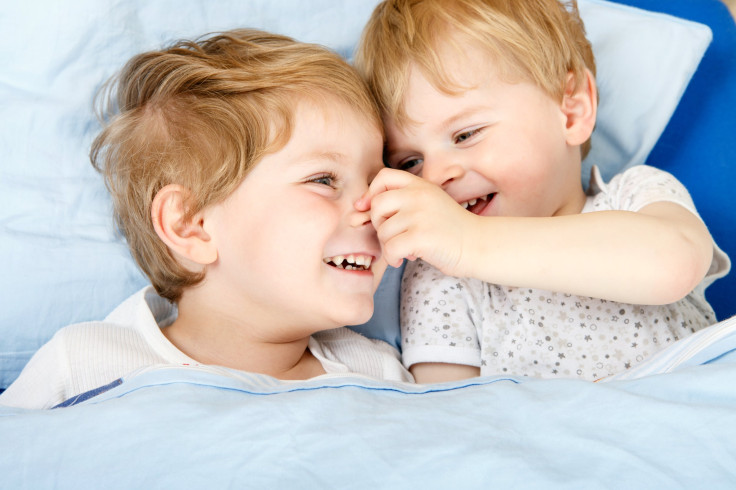Siblings Teach Each Other About The World Frequently When Left Alone To Play

Shot over a dozen years, filmmaker Richard Linklater’s Boyhood captures in time-lapse the early life of six-year-old Mason in a small Texas town. The mesmerizing vignettes of childhood offer viewers a voyeuristic glimpse into one man’s life, something cognitive scientists are attempting to replicate in real-world observations of how young children learn.
Although scientists have long conducted laboratory experiments to learn about the cognitive development of children, such observations are now moving to the child’s natural environment — apartment homes, working-class neighborhoods, bicycles left in the rain. By studying real-world interactions outside the contrivances of the research lab, researchers at Concordia University in Canada say they’ve made interesting observations.
In a paper published last year in the Journal of Cognition and Development, education professor Nina Howe finds that children teach their peers about the world in lessons occurring naturally and spontaneously, with older and younger siblings teaching one another alike. She and her colleagues at the Centre for Research in Human Development say siblings also use a variety of instructional techniques to impart these informal life lessons.
In the study, researchers conducted six 90-minute home visits with 39 middle-class Canadian families, each one comprised of two parents and two young children, ages 4 and 6. For the sake of the experiment, the children were encouraged to play together but did not receive specific instructions. Observing the kids, the researchers were surprised by what they saw. “The extent [of teaching] and what would go on surprised us,” Howe said in a press statement. “While it was sometimes brief, it was sometimes quite extended.”
Perhaps most interesting was the cooperative nature of instruction among such close-age children, as younger children taught their older siblings lessons too. “Something else that surprised us was what was being taught,” Howe said. “Lab experiments often focus on how-to instruction, such as the steps in building a tower of blocks. That’s what we call procedural knowledge, which older children often like to teach.”
According to Howe, children were more likely in the home setting to ask siblings about conceptual knowledge, such as telling the difference between a circle and square or how to discern the days of the week. Thus, parents should learn the wisdom of allowing their children uninterrupted playtime for the transmission of sibling-to-sibling learning. “Give them the time and space to interact together, and have things in the home to promote teaching and learning, both toys and opportunities for kids to be together,” she said.
Source: Howe N, Porta S, Recchia H, Funamoto A, Ross H. This Bird Can’t Do It ‘cause this Bird Doesn’t Swim in Water”: Siblings Teaching during Naturalistic Home Observations in Early Childhood. Journal of Cognition and Development. 2013.



























